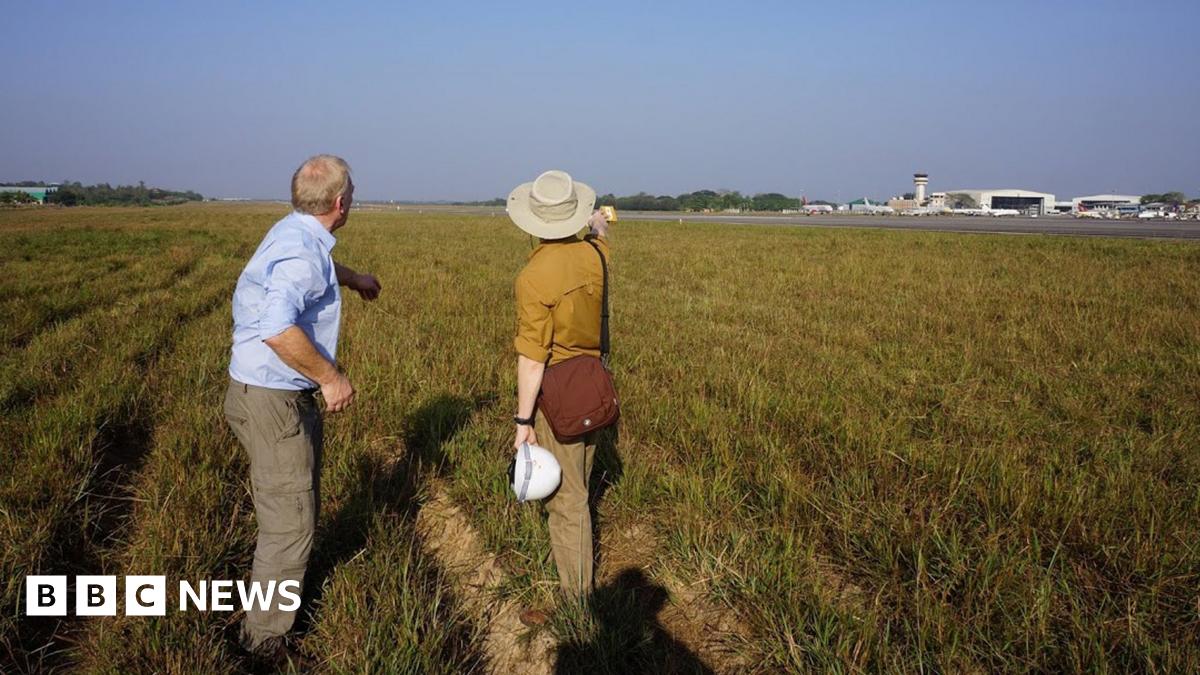Originally posted by bluecollar
View Post
Announcement
Collapse
No announcement yet.
British Farmer finds 20 brand new Spitfire's from WWII
Collapse
X
-
I was commenting on the "very good condition" part of it. I don't think anything underwater is going to be in very good condition. I am surprised to hear planes underwater have been restored. But I do remember the P38 pulled out of a glacier that is flying again.Originally posted by 46Tbird View Postaluminum ≠ steelLast edited by CJ; 01-30-2013, 05:11 PM.
Leave a comment:
-
If you believe the earlier stories from last year, the planes were greased, wrapped in wax paper, and then tared to protect them. If they are there, we might be surprised with the condition.
Leave a comment:
-
Leave a comment:
-
Aircraft pulled up from the ocean for have been restored to flying status. That's after 60 years under salt water.
Leave a comment:
-
 Guest repliedOriginally posted by bluecollar View Post
Guest repliedOriginally posted by bluecollar View Post
"It will take some time to pump the water out... but I do expect all aircraft to be in very good condition," he added...[continued]
lol

Leave a comment:
-
Perhaps some hope remains.
http://www.bbc.co.uk/news/world-asia-20957162
Burma Spitfire hunters discover crate
British experts looking for a cache of World War II Spitfire planes believed to be buried in Burma say they have discovered a crate.
The team has lowered a camera into the crate in the Kachin state capital Myitkyina, but says muddy water has stopped them identifying the contents.
Project leader David Cundall described the development as "very encouraging".
The team believes that more than 120 unused Spitfires could be buried in sites across Burma.
"We've gone into a box, but we have hit this water problem. It's murky water and we can't really see very far," Mr Cundall told reporters in Rangoon, Burma's main city.
"It will take some time to pump the water out... but I do expect all aircraft to be in very good condition," he added...[continued]
Leave a comment:
-
UPDATE: Jan 18, 2013
 Archaeologists in Burma have concluded that there are no WW2 Spitfires buried at the sites where they have been digging, the BBC understands.
Archaeologists in Burma have concluded that there are no WW2 Spitfires buried at the sites where they have been digging, the BBC understands.
18 January 2013 Last updated at 05:57 ET
Archaeologists believe no Spitfires buried in Burma
Archaeologists hunting for World War II Spitfires in Burma believe there are no planes buried at the sites where they have been digging, the BBC understands.
The archaeologists have concluded that evidence does not support the original claim that as many as 124 Spitfires were buried at the end of the war, the BBC's Fergal Keane reports.
Wargaming.net, the firm financing the dig, has also said there are no planes. But project leader David Cundall says they are looking in the wrong place. He told the BBC that he feels very frustrated but is determined to keep up his campaign, and remains convinced Spitfires are buried in Burma. Asked if he would apologise if he was proved wrong, he replied: "Of course I will. But I've tried and I believe it's better to have tried and failed than not to have tried at all."
An initial survey of the site began in early January, with excavations due to begin after that.
A scheduled press conference was cancelled on Friday morning by Wargaming Ltd, with a spokesman saying he hoped to give more details later. When pressed, the spokesman said there are no Spitfires, our correspondent says.
British campaigner David Cundall has spent the last 17 years trying to discover the truth of claims that unused, unassembled Spitfires were packed into crates and buried by the RAF at sites in Burma on the orders of Lord Mountbatten at the end of the war in 1945. He has collected eyewitness accounts from American and British service personnel as well as local people. One of them, British veteran Stanley Coombe, had travelled to Burma to witness the excavation.
The dig got the go ahead after it secured funding from Belarusian video games firm Wargaming.net, and received permission from Burmese President Thein Sein during a meeting with British Prime Minister David Cameron last year.
Mr Cundall maintains that as many as 124 Spitfires are buried in sites around Burma.
Before the dig, scientists had discovered large concentrations of metal under the ground around Rangoon's airport, lending support to the theory that up to 36 planes are buried there. Earlier this month, a crate was discovered in the Kachin state capital Myitkyina, but muddy water stopped an immediate identification of its contents.
The central city of Meiktila was another site identified as a possible burial ground for the Spitfires.
Leave a comment:
Leave a comment: